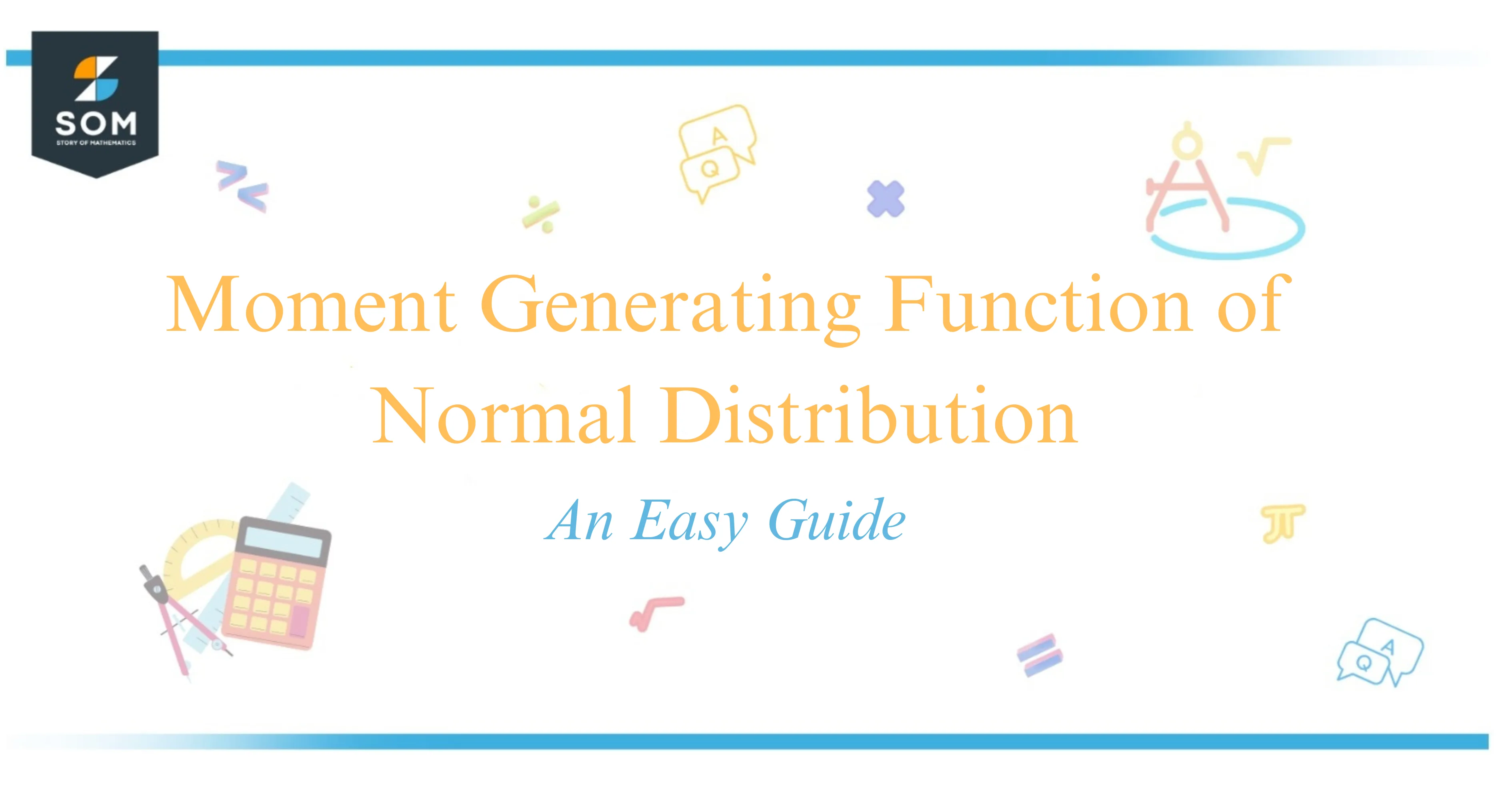
The moment generating function of a normal distribution with mean $\mu$ and variance $\sigma^2$, is $M_X(t) = e^{\mu t + \frac{1}{2}\sigma^2t^2}$.
The moment-generating function (MGF) is a powerful tool in the field of probability and statistics that characterizes the distribution of a random variable.
In essence, the MGF of a random variable provides a bridge to its moments, such as mean and variance, which are fundamental in understanding the behavior of the distribution.
For a normal distribution, which is one of the most prevalent distributions used to model various natural phenomena, the MGF is particularly elegant and insightful.

When I work with a normal distribution, defined by its mean ($\mu$) and variance ($\sigma^2$), the MGF is given by the function $M_X(t) = \exp\left(\mu t + \frac{1}{2}\sigma^2t^2\right)$.
This function encapsulates all the moments of the normal distribution, making calculations more manageable and theoretical work more streamlined.
Leveraging the derivatives of the MGF allows me to compute the moments of the normal distribution with relative ease, reinforcing why the MGF is such a cornerstone of statistical methods.
Understanding the moment-generating function of the normal distribution can enlighten us about the profound connections between different statistical concepts. How this function shapes the analytics of data and assists in solving complex problems is both fascinating and deeply relevant to my statistical analyses.
Fundamentals of Moment Generating Functions
In probability theory, the concept of a moment generating function (MGF) is pivotal. I understand it as a tool that characterizes the entire probability distribution of a random variable.

Specifically, the MGF of a variable X is denoted as M(t) and is defined by the expectation $E[e^{tX}] $, where t is a real number.
The power of the MGF lies in its ability to calculate the moments of the probability distribution. The moments refer to the expected values of powers of X. To find the ( n )-th moment, I simply take the ( n )-th derivative of M(t) with respect to t and evaluate it at t = 0: $\frac{d^n}{dt^n} M(t) |_{t=0}$.
The cumulant-generating function is related to the MGF and is another valuable tool in probability theory.
To transition from an MGF to a cumulant-generating function, I evaluate $\log(M(t))$, allowing me to easily calculate cumulants that are closely related to moments but often provide more intuitive insights into the shape, variance, and skewness of the distribution.
A detailed table outlining the relationship between MGFs and moments:
| n-th Derivative | Moment | Notation |
|---|---|---|
| First | Mean $ (\mu) $ | ( M'(0) ) |
| Second | Variance $(\sigma^2)$ | $M”(0) – (M'(0))^2 $ |
| Third | Skewness | $\frac{M”'(0)}{\sigma^3}$ |
| Fourth | Kurtosis | $\frac{M””(0)}{\sigma^4} – 3 $ |
Employing the MGF is particularly advantageous because it encapsulates all possible moments. In practice, if two random variables have the same MGF and it exists for them within an open interval around zero, they share the same probability distribution.
This property is exceptionally useful when determining the distribution of a sum of independent random variables.
Moment Generating Function of a Normal Distribution
When I explore the world of probability and statistics, the moment generating function (MGF) often serves as a powerful tool. Specifically for a normal distribution, which is also referred to as a Gaussian distribution, the MGF plays a crucial role in understanding its characteristics.
The MGF of a random variable X is defined as $M_X(t) = E[e^{tX}]$, where t is a real number, and the expectation is taken over the probability density function (PDF) of X.
For a normal distribution with mean $\mu $ and variance $\sigma^2$, the MGF is given by an exponential function:
$$M_X(t) = e^{\mu t + \frac{1}{2}\sigma^2t^2}$$
This particular form is derived using the integral:
$$M_X(t) = \int_{-\infty}^{+\infty} e^{tx} \cdot \frac{1}{\sqrt{2\pi\sigma^2}} e^{-\frac{(x-\mu)^2}{2\sigma^2}} dx$$
Here, the integral is the well-known Gaussian integral when solved, aligns with the form of the MGF I provided earlier.
For a standard normal distribution, where $\mu = 0$ and $\sigma = 1$, the MGF simplifies to $ M_X(t) = e^{\frac{1}{2}t^2} $.
This function helps me in various theoretical aspects, such as confirming the uniqueness of the distribution through a theorem stating that if two distributions have the same MGF, they are indeed the same distribution.
My calculation of moments becomes straightforward too; the nth moment about the origin is simply the nth derivative of the MGF evaluated at ( t = 0 ). For example:
$$\frac{d}{dt}M_X(t)\bigg|_{t = 0} = \mu $$
Therefore, the mean (first moment) and variance (second central moment) can be easily derived by differentiating the MGF.
Conclusion
In this discussion on the moment-generating function (MGF) of a normal distribution, I’ve highlighted its remarkable utility.
To recap, the MGF of a variable X with a normal distribution, characterized by mean μ and variance $σ^2$, is represented by the expression $M_X(t) = \exp(\mu t + \frac{1}{2}\sigma^2 t^2)$.
This formula encapsulates the essence of the normal distribution’s MGFs: the capacity to derive moments and facilitate the analysis of a variable’s distribution.
As we’ve seen, the power of the MGF stems from its ability to encode an infinite number of moments, which are essential in understanding the shape and behavior of the distribution.
Thanks to the elegance of the MGF, we can also tackle more complex problems like finding the distribution of linear combinations of independent normally distributed variables, which is crucial in fields such as economics and engineering.
It’s also important to note that the MGF of a normal distribution exists for all real values of t, a property that not all distributions’ MGFs share. This detail underscores the analytical convenience of the normal distribution as a model in various applications.
Remember, while mastering the MGF takes some effort, the clarity it brings to understanding statistical distributions is well worth it. Whether you are an aspiring statistician, a data scientist, or merely a statistics enthusiast, appreciating the elegance of the MGFs could enlighten your perspective on probability theory.
